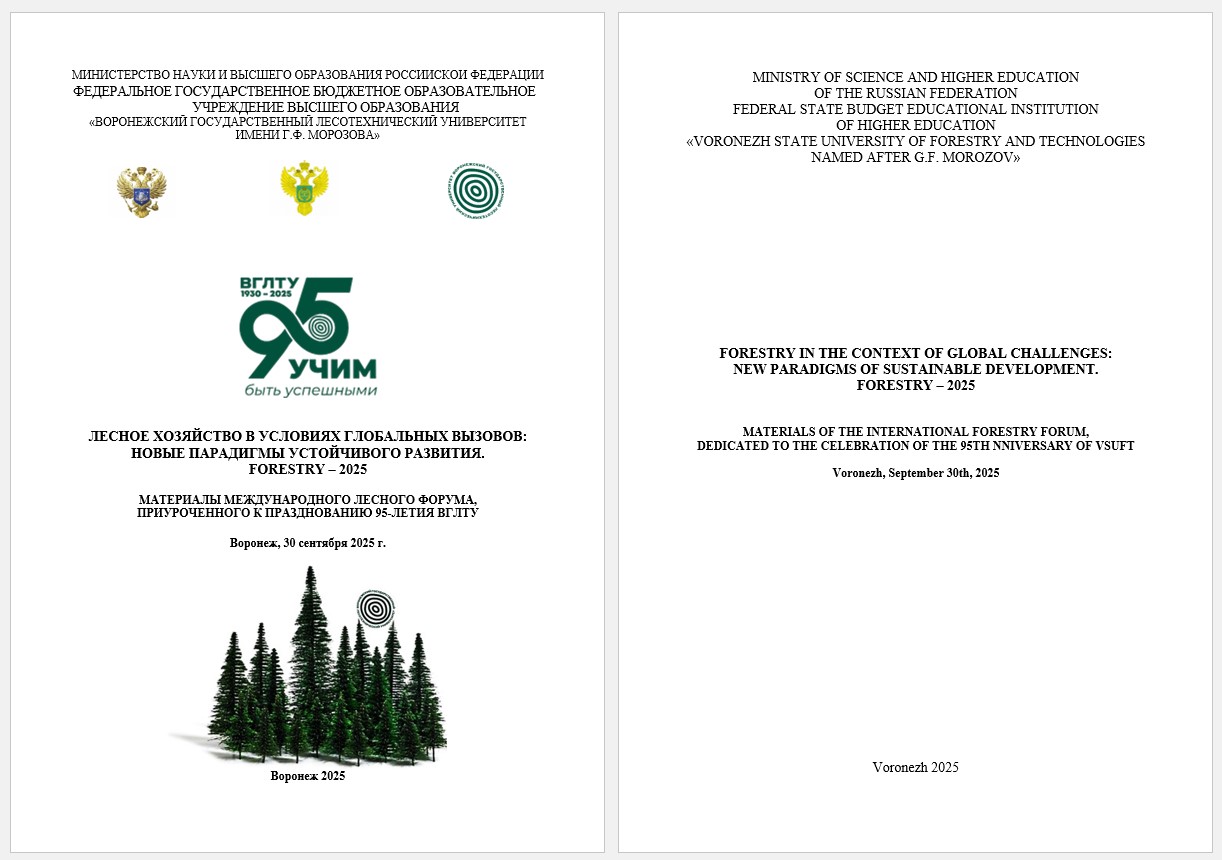Yalta, Simferopol, Russian Federation
Russian Federation
In Russia, Q. pubescens grows in the North Caucasus in two isolated areas. In the extreme west - in the lower mountain zone and on the Black Sea coast. In the east - in the foothills of the Greater Caucasus and in the coastal areas of Dagestan. In Crimea, the main forest massif of Q. pubescens is distributed in the coastal part of the southern macroslope of the Main Ridge of the Crimean Mountains. Most of the plantations of Q. pubescens are represented by low-productivity stands of coppice origin.
Q. pubescens, habitat, plantations, condition, form diversity
1. Vul'f E.V. Flora Kryma // Nikit. bot. sad, 1927. T. 1, vyp. 1. 54 s.
2. Koba V.P., Pshenichnikov N.A., Nagornyak A.A. Vozobnovlenie Quercus pubescens Willd. v zapovednike «Mys Mart'yan» // «Nauchnye zapiski prirodnogo zapovednika «Mys Mart'yan». 2023. Vyp. 14. S. 150–156.
3. Kochkin M.A. Pochvy, lesa i klimat gornogo Kryma i puti ih racional'nogo ispol'zovaniya. M.: Kolos, 1967. 368 s.
4. Menickiy Yu.D. Duby Kavkaza. Leningrad. Izd-vo Nauka. 1971. 196 s.
5. Ruschuk A. D., Ruschuk V. S., Chavdar' N. S. Vnutrividovaya izmenchivost' populyacii duba pushistogo v zapovednike «Yagorlyk». In: Problemele Bio- si Geoecologice al Nistrului de Mijloc si de Jos, 15 noiembrie 2024, Tiraspol. Tiraspol: Eco-TIRAS, 2024, pp. 178-183. ISBN 978-9975-89-320-6. DOI: https://doi.org/10.70739/gbp2024.
6. Soldatov A.G. Vyraschivanie vysokoproduktivnyh dubrav. M.: Izd-vo sel'skohozyaystvennoy literatury, zhurnalov i plakatov. 1983. 176 s.
7. Stankevich V. I. Iz lesov gornogo Kryma. S.-P., 1908. –167 s.
8. Troickiy N. D. Dubovye lesa Krymskogo gosudarstvennogo zapovednika. M.: Izd-vo Glavnauki, 1929. – 168 s.
9. Arend, M., Kuster, T., Gu¨nthardt-Goerg, M. S., & Dobbertin, M. Provenance-specific growth responses to drought and air warming in three European oak species (Quercus robur, Q. petraea and Q. pubescens). Tree Physiology, 2011. 31:287–297.
10. Berta Alen, Tom Levanič, Denis Stojsavljević, and Vladimir Kušan. "Site Index and Volume Growth Percentage Determination for Privately Owned Uneven-aged Stands of Quercus pubescens and Quercus ilex along the Croatian Adriatic Coast." South-east European forestry 10, no. 1 (June 7, 2019): 65–75.
11. Facioni Laura, Sabina Burrascano, Eva Del Vico, Leonardo Rosati, Agnese Tilia, and Carlo Blasi. "Phytosociological analysis of white oak (Quercus pubescens s. l.) woodlands and related successional stages: spatial patterns and their drivers." Phytocoenologia 45, no. 4 (December 1, 2015): 325–64.
12. Ripullone Francesco, J. Julio Camarero, Michele Colangelo, and Jordi Voltas. "Variation in the access to deep soil water pools explains tree-to-tree differences in drought-triggered dieback of Mediterranean oaks." Tree Physiology 40, no. 5 (March 3, 2020): 591–604.
13. Santonja Mathieu, Susana Pereira, Thierry Gauquelin, Elodie Quer, Guillaume Simioni, Jean-Marc Limousin, Jean-Marc Ourcival, Ilja M. Reiter, Catherine Fernandez, and Virginie Baldy. "Experimental Precipitation Reduction Slows Down Litter Decomposition but Exhibits Weak to No Effect on Soil Organic Carbon and Nitrogen Stocks in Three Mediterranean Forests of Southern France." Forests 13, no. 9 (September 14, 2022): 1485.
14. Wellstein Camilla, Spada Francesco The status of Quercus pubescensWilld. In Europe. In: Box, Elgene Owen (Hrsg.): Warm-Temperate Deciduous Forests around the Northern Hemisphere. Cham: Springer, 2015. - pp. 153-163.





